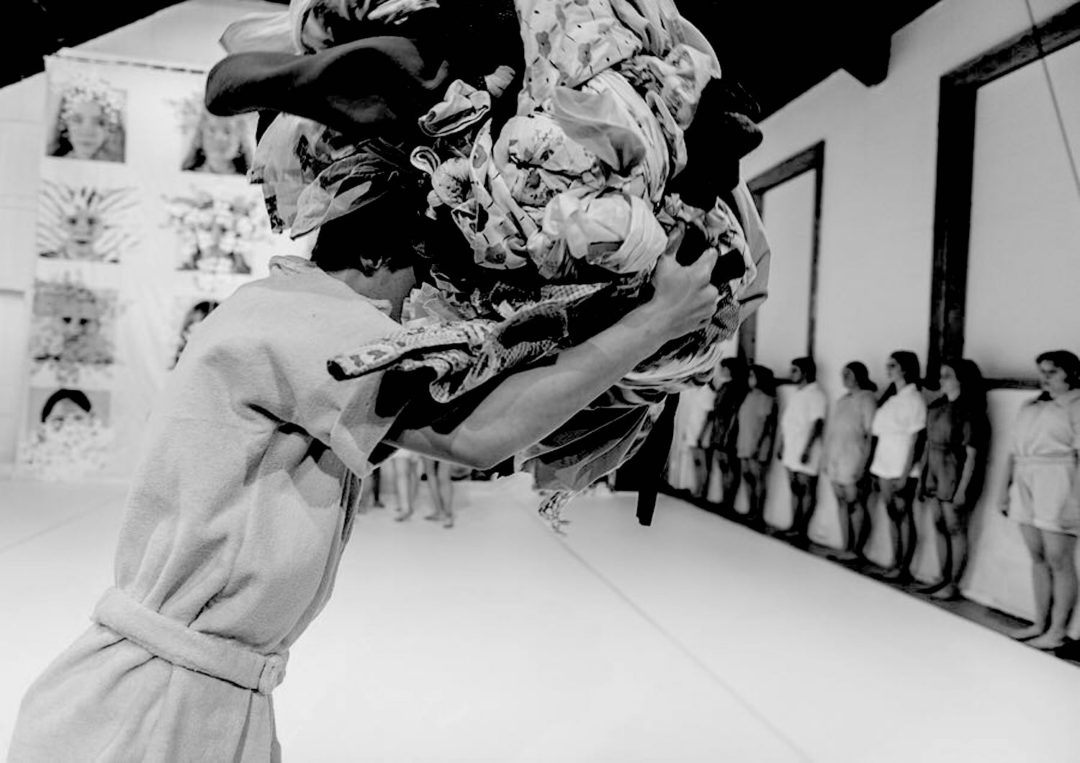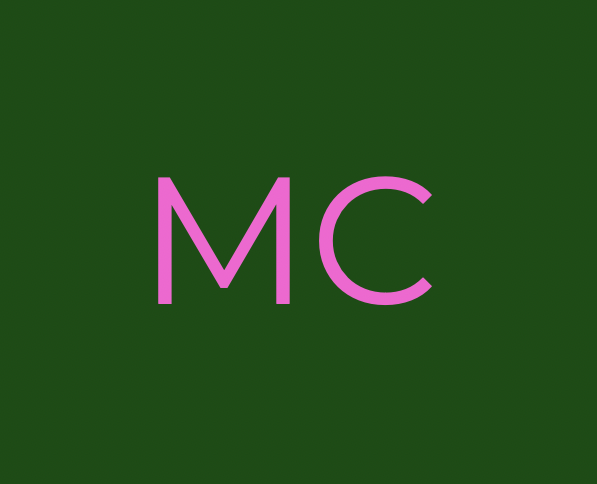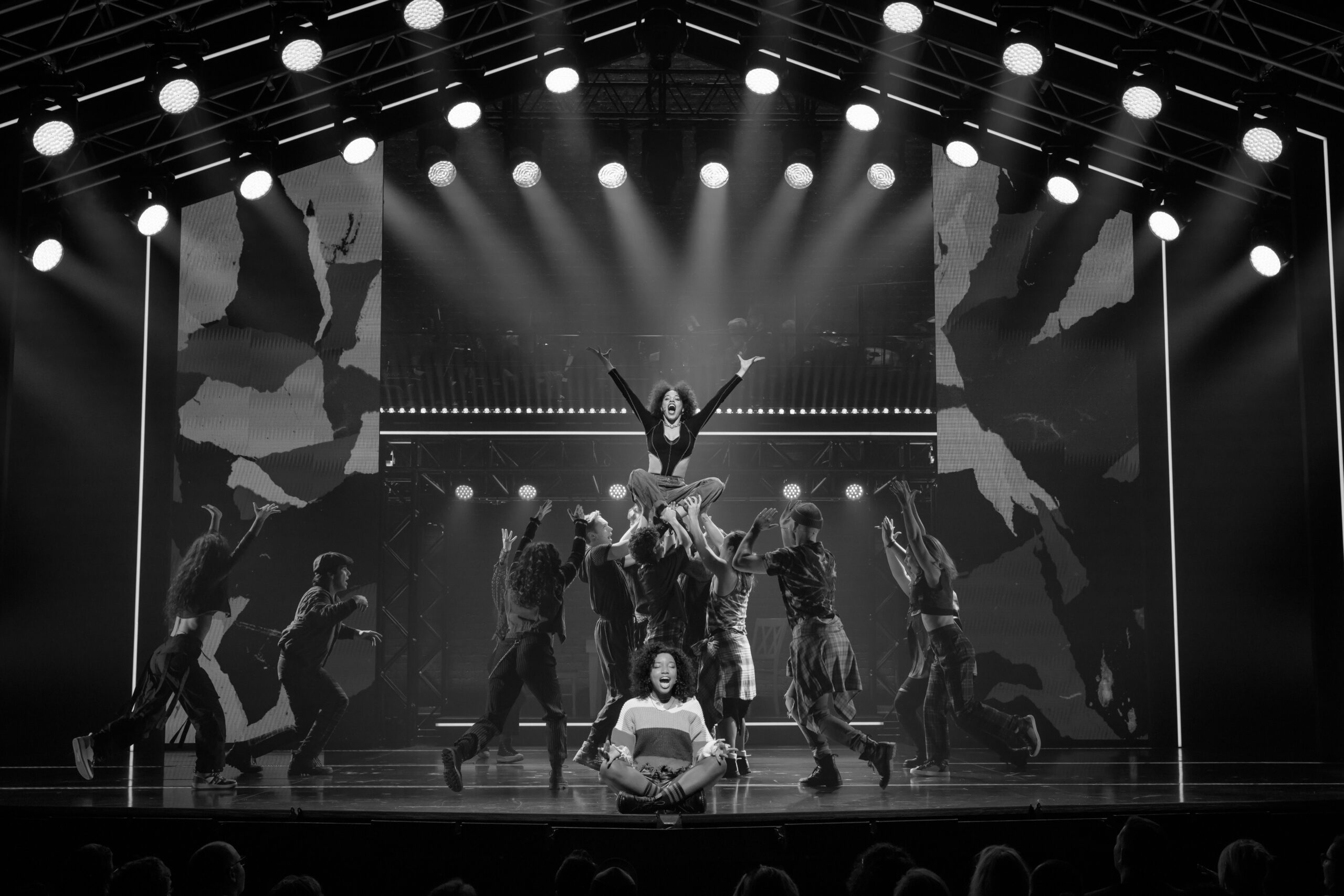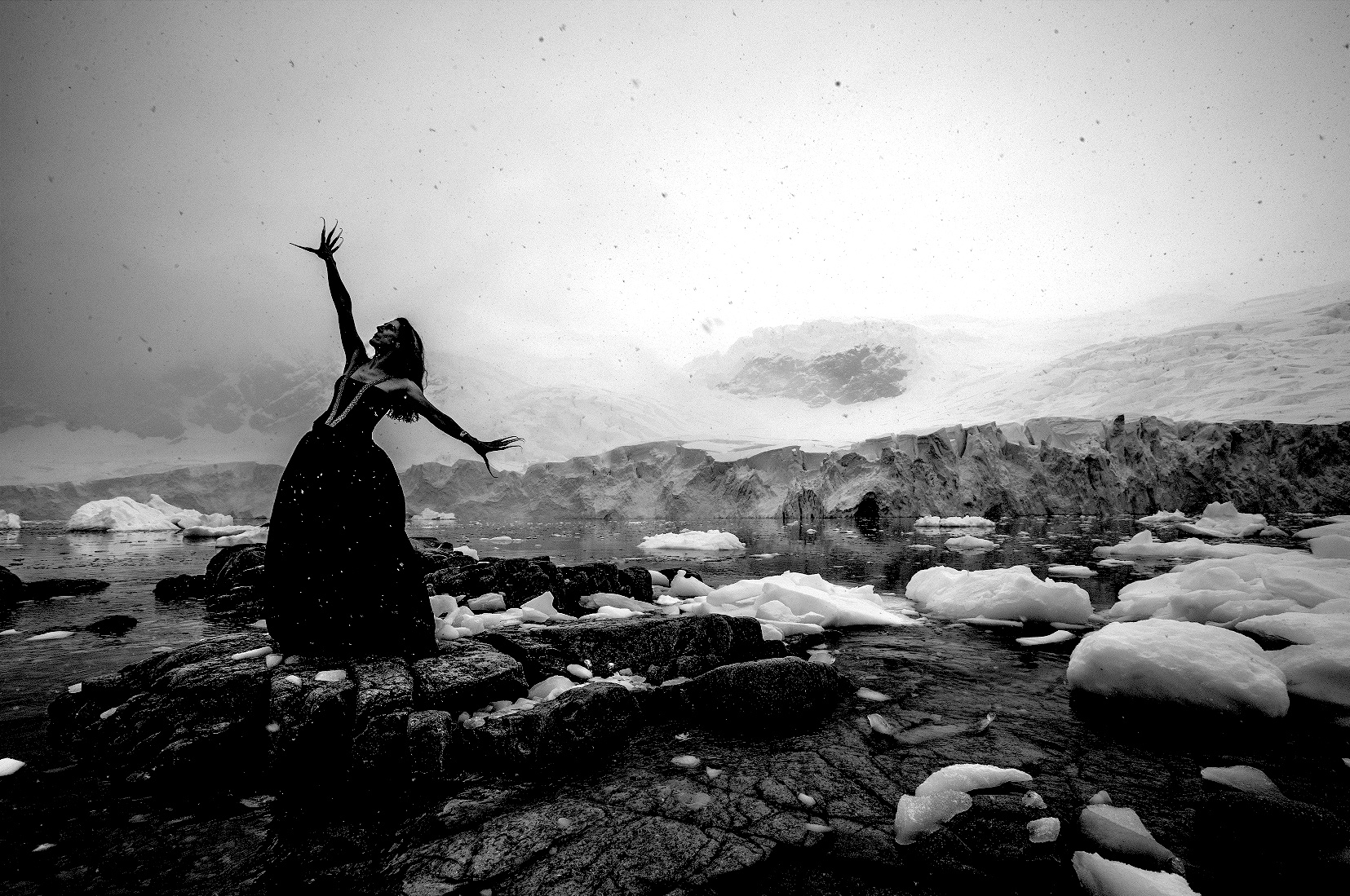‘PARADISE’ OR PANDEMONIUM?

My name is Isabella Whāwhai Waru and I am a Ngati Tukorehe and Te Atiawa descendant. What follows is my account of events that have unfolded over the past month which are close to my heart and which call upon my sense of responsibility as an artist, writer and Indigenous person to speak my truth. While the response is to a specific work, I am using this opportunity to talk about social responsibility and the impact of the arts to our society more broadly.
On the 23rd of September I was spending time away from work and study with my whanau//family. During this time of rest, myself and a friend of mine, also of Māori descent, became aware of a video expropriating the art and practice of Māori poi. This video was posted by Yellowwheel, a youth dance company based in Narrm//Melbourne, as promotion for their upcoming show, Paradise choreographed by Phillip Adams in collaboration with Gregory Lorenzutti and Mikala Dwyer.
Upon discovering this, my friend and I commented, expressing that we did not feel it was appropriate. To this, I received responses which attempted to justify the use of their appropriative content, patronizing me in the process. I was directed to read the program note for the work, which was suggested would provide me with greater context for what ‘inspired’ it.
The program for Paradise reads; Phillip Adams BalletLab and Yellow Wheel invite you to experience Paradise, a fantastical vision of the South Pacific and visual expression of pageantry, lively choreography and whimsical ceremony. Presented from 26 – 30 September as part of the 2018 Melbourne Fringe Festival, Paradise assembles Adams’ treasured childhood memories of the South Pacific with colourful motifs and improvisations from 1960/70s television and cinematic popular culture. A delightful and unexpected co-presentation between 2018 Australia Council Award for Dance winner Phillip Adams and pre-professional dance company Yellow Wheel, with esteemed artists Mikala Dwyer and Gregory Lorenzutti, –Paradise is a multi-generational collaborative work, at the heart of which are the 20 dancers of Yellow Wheel (aged 15-24).
What is immediately problematic with this program note, is that it tokenises and reduces the ‘South Pacific’ to an unidentifiable, ‘exotic’ concept rather than the real and sacred home to a great many Indigenous cultures. What also comes to mind here is the phrase, ‘nothing about us, without us.’ Indigenous peoples world over have been studied, researched and articulated through a white gaze and by white people from the dawn of colonisation to now and, given this hxstory, there is absolutely no need for white people to be representing us, talking about us or making art about us; without us there to ensure our hxstories, practices, lives and existences are not being tokenised, bastardised and exoticized.
After a while of back and forth, I came to realise that the voices of two indigenous femmes were not going to be accepted or heard by the company. That no change would come about between us. Hxstory teaches us that one Indigenous voice is not enough to be believed and listened to, and that for change to occur, we must come in crowds to prove the validity of our perspectives. So, I reached out to my community on my personal social network, asking friends to also comment on this post and express to Yellow Wheel that this was a concern of more than one person.
After a whole day of explaining the ways in which the expropriation of Pasifika/Māori culture is inappropriate, Yellow Wheel finally removed the post, sent private messages to those involved to apologise, and expressed that they would not go ahead with that content.
Although we had finally achieved a result after a day of social media rallying, this should in no circumstance have been the case. When an Indigenous person explains that something is inappropriate or hurtful – we should be heard, the first time. It should not take 24hrs, 30 people and threat of a tarnished public image to garner a response. If people truly care for acting in solidarity and respect, they would genuinely listen to the voices and needs of Indigenous peoples; the first time.
While this was a small victory, myself and others felt we were being silenced. That these private messages and an agreement to not use that content was more a means of damage control to bury the issue and avoid further backlash than genuine intent to reconcile. I sent the company a message requesting that they remove all other social media content which included footage/images of the expropriative content (which still stands on their social media now), and requested a public apology and an explanation of how they intend to avoid such things occurring in future. This message was never responded to, which to me, confirms their lack of sincerity.
Among this fiasco, I organised a ticket to the show. Out of courtesy to the organisers and performers, I wished to personally view the work and be informed before writing any sort of response here. Below is what I witnessed;
On September 27, I attended Paradise. I walked into Temperance Hall where the performance was to be shown, and immediately laid eyes upon the backdrop; which consisted of the faces of the youth company, adorned with prints from leaves, I assume. Matching the brightly costumed dancers in orange, green, blue; at least half of these prints resembled headdresses – cultural markers and sacred ceremonial dress of a number of Pacific peoples. The work had not started yet and I was already faced with what seemed quite blatant expropriation of Pasifika cultures, in a stark white room no less. Had I noticed this in the video I saw when I called for the removal of the poi section, I would have also fought to have this removed.
The music began – a classical piece, Richard Strauss’ 19th century Tod und Verklärung (Death and Transformation) Op 24. The first happening is a blowing of whistles and dancers stomping – I immediately think of an army, and this marching motif carries throughout the performance. Dancers are then manipulated around the space by other dancers, some seem to assume positions of power and others are subjected to it. A fight scene plays out. There is an uncomfortable air of dictatorship being built here. The dancers are like soldiers and I wonder, what is this army fighting for? The movement is heavily and confusingly influenced by ballet, given the work explores the ‘Pacific’. The dancers leave the room, only to return having changed out of their colourful dress – into all white.
They emerge holding their abstracted version of poi, which I was assured would not make an appearance, swinging them tight in their fist, walking in an orderly line, only to drop them in the corner of the room and begin a movement sequence resembling a ‘reverence’ – what is done at the end of a ballet class or performance to thank teachers/musicians/audiences for attending.
If this work was not claiming to be an imagining of the Pacific, stealing and misrepresenting Indigenous cultures, then I would have no issue with it. I would assume it was a comment on totalitarian regimes, militarisation, power dynamics in the Western world… But if this is Adams’ image of the Pacific, what is this meant to represent? Why and how is this ‘whimsical’ or ‘fantastic’ as the program puts it? Does army presence, war and whiteness in the South Pacific seem fantastical to you?
There is no subtlety in the overwhelming, encroaching and building presence of whiteness in the space. The room itself, the audience, the dancers, the costumes, the music and the movement vocabulary centre whiteness both literally and otherwise. If this is your image of the Pacific as a ‘Paradise’ Adams, are you calling for an all-white Oceania? Are you promoting colonialism and assimilation?
Quite honestly, by the end of the work I feel incredibly unsettled, upset and isolated. The audience begins to clap and cheer loudly and I start to feel claustrophobic. They are congratulating, supporting and therefore condoning an artist and a work, which essentially tokenised, misrepresented and reduced an entire Ocean of peoples and cultures to this white mass. This show may have been whimsical and entertaining for the white, but it was not my Paradise. This was my nightmare*******
While the white community in the arts would likely suggest that art is a place to ‘challenge,’ and deploy the usual dismissive statements about ‘freedom of speech’ and ‘censorship,’ I would like to draw attention to the fact that while these may be privileges that some indulge in, Indigenous peoples do not presently have equal platform, equal representation, equal voice or equal say in any industry or realm (Government, media, education, etc) and therefore, the concept of ‘free speech’ will always tip in favour of white peoples because they are the ones with the power, the platforms and the microphones.
Until this is addressed and corrected, it is necessary for Indigenous peoples to fight for, defend and protect our cultures, peoples and practices – because we do not have the liberties, the same amounts of systemic power and space to correct and manage all the ways that we are being misrepresented and disrespected. It is for this reason that I felt it necessary for me to write this article – because I knew no other review of this work would say what I am saying now. It is for this reason that I believe in the importance of Indigenous writers – as counterpoints and alternative perspectives and lenses to the great array of Western perspectives on any given topic.
It is obvious that people who hold power and platform have the capacity to influence the thinking and acting of those who look to and respect them. Therefore, what is said, done and taught by these people’s actions and work truly matters and has impact. It is irresponsible to misrepresent the Pacific, allowing audiences who may have very little awareness and connection to those cultures to absorb homogenised, exotic and damaging perceptions. Equally so, it is irresponsible to allow those who deem the expropriation of Indigenous cultures as acceptable behaviour, to mentor and therefore influence young and impressionable artists – artists who will be the next to lead the way.
As a young Maori person training in an institution where the work of Phillip Adams is studied, and who is about to emerge into a creative industry which celebrates him – I can’t help but feel betrayed by my industry and isolated from my peers and colleagues. How am I to look up to this person who has expressed to me that they do not care to respect my culture, my people, my ancestors, and therefore – me? How can I feel safe and comfortable when I know many of my peers and teachers, whether actively or passively, are condoning these behaviours, these attitudes and allowing artists (and people) to continue to act in this way; by not doing or saying anything about it. How can we as artists be priding ourselves in ‘changing social landscapes’ and ‘being revolutionary’ when the toxicity within our own ranks is not being questioned?
I say these things not because any of this is new or rare, but because it is necessary to keep speaking, to keep being heard, to call things out so that they are acknowledged and addressed. Things like this are happening all the time and often on much larger scales. This time, it just happened in my backyard, in my industry, among people I know – and I have had enough of ‘letting it go’. So, in moving forward here is what I have to say to the arts industry – “we speak about the power of the arts to create societal change and influence the world around us.” “ Let us participate in the eradication of oppressive regimes, systems and peoples who uphold them” – especially among our own networks.
Let us listen to the voices of the marginalised and oppressed; the first time. Let us be prepared to make mistakes but also to be ready to listen, reflect and make the necessary changes to be and do better. If it has been expressed that your actions are offensive, listen. When we point out racism, when we point out expropriation – it should not be up for discussion. And although I am sure, some will read this article and ask, ‘what is the big deal?’ or attempt to belittle me and my discussion by calling it an ‘overreaction’ – I would ask them to look at the pyramid of white supremacy and racial oppression.
This pyramid explains that the greater, more recognisable, more violent and more noticeably damaging acts of racism; white supremacy and white power, are made possible and are supported by the minor acts, words, belief systems and attitudes which precede them.
Just like each person who uses a plastic bag or straw contributes to an Ocean full of waste and the destruction of our natural environment; each small violent, dismissive, misrepresenting or inappropriate act contributes to a greater landscape of racism and white supremacy.
If we allow the ‘smaller’ violences, we make room for the bigger ones to occur. Let us call out the bullshit. Let us remember that to be silent is to be complicit.
The action of each individual counts. And when this person is given a position of power or influence, the repercussions of this one person’s beliefs and actions can be massive. We have people in power with corrupt belief systems making decisions and influencing our lives from a systemic position. This can only be called into question and dismantled if people speak and stand up to it – and it should not be the sole responsibility of the oppressed to do this. The solidarity of people who hold power and privilege through their whiteness and otherwise, is valuable here. Do the work so that those who are most directly affected by injustice do not have to do it all.
My final words? Maori peoples are here. Oceanic peoples are here. Indigenous peoples are here. Black peoples are here. WE ARE HERE. We are strong. We are proud. We do not need you ‘telling our stories’ and misrepresenting us. And we are not going away.
To Yellow Wheel and Phillip Adams – a makeshift, insincere apology is not enough. You are not excused and are being held accountable.





